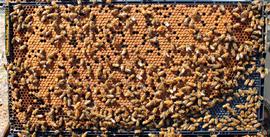 Too few adult bees to properly care for and maintain proper temperature for brood; photo by The BeeMD photo collection
Too few adult bees to properly care for and maintain proper temperature for brood; photo by The BeeMD photo collection
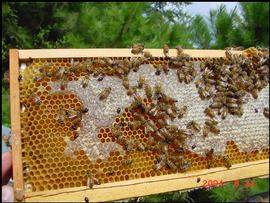 Apparent low adult population to adequately ripen honey; small hive beetles, which also appear in the photo, could be the reason for the reduced adult presence; photo by Jennifer Berry, bugwood.org
Apparent low adult population to adequately ripen honey; small hive beetles, which also appear in the photo, could be the reason for the reduced adult presence; photo by Jennifer Berry, bugwood.org
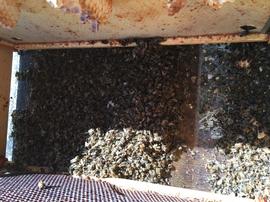 Sudden heavy depopulation; dead bees on screen of bottom board due to a spring starvation event; photo by Dewey M. Caron
Sudden heavy depopulation; dead bees on screen of bottom board due to a spring starvation event; photo by Dewey M. Caron
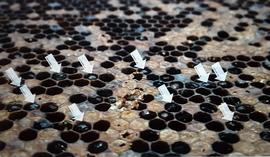 AFB scale at arrows and at other cells (advanced case); photo by Carolyn Breece, Oregon State University
AFB scale at arrows and at other cells (advanced case); photo by Carolyn Breece, Oregon State University
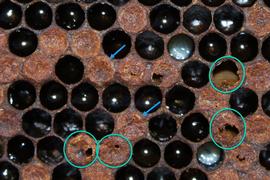 Perforated (bottom circles) and sunken (arrows) capped cells and cells showing caramel-colored, decomposing pupa (circles at right) characteristic of AFB; photo by Robert Snyder
Perforated (bottom circles) and sunken (arrows) capped cells and cells showing caramel-colored, decomposing pupa (circles at right) characteristic of AFB; photo by Robert Snyder